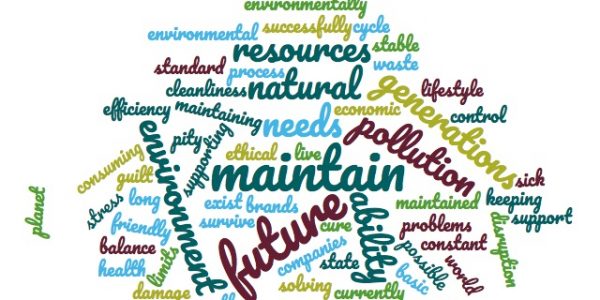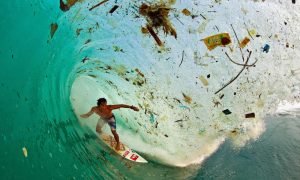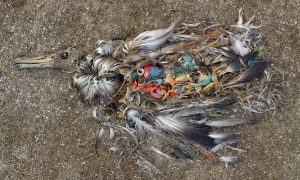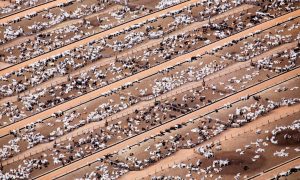Sustainability Series at Ridgeview & Redmond High

Each trimester, The Environmental Center Youth Educators present our Sustainability Series to Health 2 classes at Ridgeview and Redmond High Schools. We have a wonderful collaboration with Coaches Millington, Pileggi, and Capps to bring environmental health into the classroom. Interacting with high schoolers about the environment and how it relates to health class is always refreshing and our conversations are invigorating.
“The Environmental Center educators are true rockstars and very passionate about our environment. They’ve visited us in our classroom for many years now and enlighten us time and time again.” – RVHS/RHS Health Educators
The series focuses on the relationship between personal health and the environment. Students examine their lifestyle choices and how their actions impact the planet’s resources. Students also calculate and interpret their personal eco-footprints.
Due to at-home learning protocols, our youth educators teamed up with RVHS/RHS Health 2 teachers to collaborate and create a virtual program and presentation for their Environmental Health unit. The unit is a combination of short presentation slides, video content, readings and responses, and individual impact mapping with personal goal setting- all related to mapping one’s impact on the environment.
Students examined photos (below) and reflected on common themes.
Here were some responses:
- The obvious theme between the images is abuse to our ecosystem and encouragement to improve the conditions of which we interact with nature. It is also an advertisement for finding renewable resources and working to use eco-friendly products. Also, to quit supporting agro-industrialization.
- They are all pictures of bad things that have happened or are happening to our planet and environment. These images are all pictures of ways humans have negatively impacted our planet.
- They are all examples of worsening environmental problems caused by humans
- They all show the use and abuse of nature we as humans have done and inadvertently participated in. A theme of destruction is shown.
The question was then posed: “What does sustainability mean to you?” This term is often difficult to truly define and consider. Can we be sustainable? Can we practice sustainability? Is it a specific way to be? These high schoolers had some incredible thoughts and responses to the question. After combining the terms and definitions used to define “sustainability” here’s what we heard:
When considering the working definition of sustainability: “Meeting the needs of the current generation without compromising the future generations ability to meet their needs,” students then explored their personal eco-footprint to find out their personal impact on the environment, and ultimately, if they are practicing sustainability.
Using an online tool, (footprintcalculator.org) students calculated their personal impact on the environment based on their daily actions and habits. The calculator reveals a specific number for your personal eco-footprint in the range from 1-10, which determines how many more planet Earths we would need if everyone on the planet, all 8 billion people, lived like you. (Scoring lower means your impact is lighter.) Scores vary, of course, and as you see below, the most popular result was the 3-4 range. The average high school student’s lifestyle would require 3 or 4 more Earths to make up for the amount of resource consumption, including land, water, and energy, required to live this way.
 The scores tell you even more details about your lifestyle. Including your highest area of consumption between 5 different categories. Results here:
The scores tell you even more details about your lifestyle. Including your highest area of consumption between 5 different categories. Results here:
Food and mobility are typically the biggest areas of consumption for teenagers, as they are beginning to have their own jobs and transport themselves to and from school/jobs/activities. “Food” entails the types of foods purchased and what you typically consume. (Fast food vs whole foods, plant based diet or meat-heavy diet, single use packaged foods or foods with reusable or no packaging). “Mobility” includes the type of vehicle you get around in, miles driven per day, and how many trips you take individually vs carpooling.
Once students figured out their eco-footprint results and dived into some of the data and details, they were asked to brainstorm 5 ways to reduce their eco-footprints. Students came up with fabulous ideas that we wanted to share. Although the ideas seem obvious, and maybe you’ve heard them before, we wanted to highlight how many times certain ideas were brought up, and how specific actions (whether it’s increasing your local purchases or decreasing the miles you drive) can truly add up to create a more sustainable town, community, and ultimately, environment for everyone.
Students were passionate about alternative commuting (when possible) such as carpooling, public transportation, and walking/biking to your destination. Another popular idea was shopping smarter, which includes buying in bulk when possible (to reduce single use plastics), buying locally to reduce transportation impacts from products being shipped and delivered, and for health reasons such as eating foods that were grown nearby. Energy consumption shows up as well, which includes turning off electronics when not in use, switching off lights, and decreasing overall electronic usage time.
A major takeaway for our education department was the amount of times students mentioned recycling. Less than three students included “recycling” in their list of 5 ways to decrease their eco-footprint. Although we will always support recycling, there is something to be said about first decreasing the amount of products you purchase, which then become waste, in the first place. How can you reduce and reuse things before you even think about recycling? It’s a challenge, but a great one to consider!
We are always thrilled to work with high school students who are the next generation to truly see the impacts of climate change. Understanding how actions really do play a part in the health of our planet is just the first step. Putting these actions into play is where sustainability comes in.
We want to highlight that this work isn’t just for high schoolers, folks! You have your own eco-footprint as well. Visit this site to find out your individual impact on the planet
Taking a look at your daily impact is sometimes overwhelming, so we recommend picking one category to start with, and making small, feasible changes from there. We would love to hear about any successes you’ve had with decreasing your eco-footprint. Hopefully the ideas from the brainstorm above will empower you to think about your impact on our planet.



